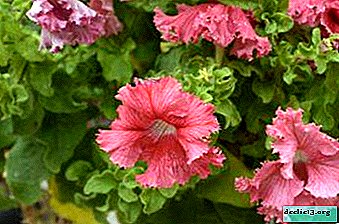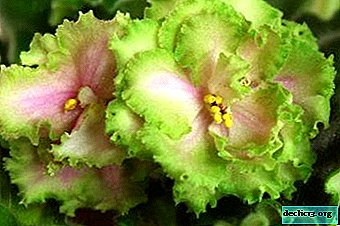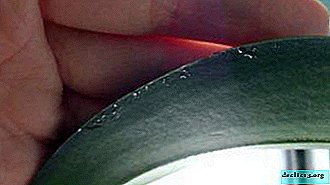Tips and tricks on how to grow pomegranates and how to care for them
 Since ancient times, pomegranate is a symbol of fertility, which is quite symbolic, because inside the berry there are many grains with seeds.
Since ancient times, pomegranate is a symbol of fertility, which is quite symbolic, because inside the berry there are many grains with seeds.
It is not surprising, but pomegranate is a large berry, smaller, of course, than a watermelon. The plant belongs to the Derbennikov family and has been known to mankind for more than 5 thousand years.
In the article you can learn about all the ways how to grow a pomegranate tree and how to care for it.
In what climate does a pomegranate tree grow?
The homeland of pomegranate is considered the land of Southeastern Europe, Asia. Still pomegranate fruits were grown in Ancient Egypt, Iran, India, Babylon. In the Middle Ages, the fruit, fully grown in Spain, was taken by missionaries to California and Mexico.
Pomegranate develops well in subtropical, tropical and temperate climates.. Currently adapted to the climatic conditions of Azerbaijan, Tajikistan, Uzbekistan. This exotic fruit grows in great abundance in the Crimea, Krasnodar Territory, in the warm and hot regions of the North Caucasus. In the wild, pomegranate trees grow in the Caucasus.
Today, there are frost-resistant varieties of pomegranate that can withstand short-term frosts down to -17 ° C. Thus, they can theoretically be grown in central Russia, but this is not an easy task.What is the best time to propagate?
 Pomegranate propagates in two main ways.: seed or vegetative.
Pomegranate propagates in two main ways.: seed or vegetative.
The process of growing planting material itself can be carried out at any time of the year.
However, it is allowed to plant in the ground exclusively in the warm season.
Preliminary measure the temperature of the soil, if it is warmed up at a depth of 10 cm to a temperature of at least + 12 ° Cthen landing work is carried out.
Typically, such soil parameters are obtained in late May-June.
How to prepare the ground?
Pomegranate trees are not picky about soil selection. They quietly grow in heavy soils, loam and sandy loam. But on sandy soils, productivity decreases, and on clay soils taste qualities are lost, and the size of the fruits is noticeably reduced. Optimum for growth and fruiting are considered moist, fertile lands with acidity in the range of pH 5.5-7.
Soil composition:
- turf land;
- peat;
- sand;
- humus or compost.
These components should be taken in equal proportions. Previously, before planting a tree, the earth should be carefully dug up, fertilized with humus and provided with watering. A prerequisite is drainage. Water should be well drained. Chipped brick, gravel, crushed stone are used as drained material..
How to choose the right place to land?
When choosing a place for planting pomegranate, one should proceed from optimal conditions for subtropical crops. Therefore, the site should be sunny, as secluded as possible, protected from winds and drafts. Especially for this, it can be fenced. It is important to consider the depth of groundwater, which should not exceed 3 meters.The correct choice of location for a fruit tree is a guarantee of ideal development in the future:
- If the plots are located in places where cold air is collected, in the armholes of rivers, in beams on the northern plains, then it is highly likely that grenades will not grow there.
- Also saline and marshy areas are not suitable for it.
- It is advisable to plant the crop on the plains from the south or southeast side, which are minimally exposed to seasonal frosts.
Methods for growing in open field
Is it possible to grow a tree in the garden or in the country and how to do it? There are enough ways to breed pomegranate. It is bred from seeds, cuttings, sprouts, using layering and vaccinations. But each of them has its own characteristics.
From bone
Large, absolutely ripe fruit is chosen for bone extraction, with good taste. Only then can you be sure that the daughter plant will be no worse, but provided that quality care is provided for 2-3 years.
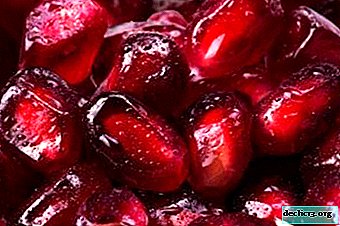 Peel pomegranate seeds, and immediately place in a container with a stimulating solution for 10-12 hours.
Peel pomegranate seeds, and immediately place in a container with a stimulating solution for 10-12 hours.- Prepare a pot for planting and ground.
- Spread the seeds evenly over the soil surface at a depth of 1 cm. Then sprinkle with earth a layer of 1.5 cm.
- It is necessary to create greenhouse conditions.
- Provide seedlings with regular watering with warm water and access to fresh air.
- As you grow, remove the greenhouse.
- When the sprouts stretch 3-5 cm up, they will need a pick.
- After 3 months, repeated.
- Leave only strong, healthy shoots for pomegranate.
Cuttings
This is the most popular method among gardeners. It gives an almost 100% guarantee of the crop.
- In the first days of spring we prepare the stalk: we take the middle of the biennial branch about 15-20 cm.
- Certainly the presence of 2-3 kidneys.
- Soak for 2-3 hours in a solution of a biostimulant.
- Plant the prepared stalk in a container with well-warmed soil to a depth of 10 cm. One internode should remain above.
- Greenhouse conditions should be created to obtain the desired result.
- Do not forget to air and water the stalk.
- After 3-4 months, the sprout should be transplanted into a large container for further germination.
- A year later, in late spring, you can plant in the ground.
Layering
The method of propagation by root shoots is used in cases where there is a need to rejuvenate a pomegranate tree. Then carefully separate the strong root shoots and plant them in open ground for further strengthening.
Important. The procedure should be carried out in the spring. Then by winter, the sprouts will become strong and flexible, thus, withstand the shelter for the winter.Vaccinated
 There are several types of pomegranate vaccinations.:
There are several types of pomegranate vaccinations.:
- splitting the cuttings;
- under the bark;
- budding, which implies vaccination with a sleeping eye.
The first two methods are performed in early spring, approximately in the month of March.. But the last one - at the beginning of autumn. The cuttings should be selected from a young plant, 15-20 cm in size. It is better to insert it into the tree from the north side, so the sun's rays will not penetrate the splicing site. The first flowering of pomegranate will come in 3-5 years.
Sprout
According to the principle, the method is quite similar to the seed one. The finished sprout is carefully planted in a container with prepared, nutritious soil. We create the right conditions for further growth - this is the temperature and humidity in the room, watering, spraying. After a few months, depending on the size of the plant and the time of year, plant in the ground.
Features of growing at home
- Southern culture at home needs to create favorable conditions, the first thing is lighting. The plant should be placed so as to create the longest daylight hours.
- In summer, moderate hydration is required, about 1 time in 7-10 days. It is necessary to monitor the drying out of the upper soil layer. As soon as the soil is dry - immediately water. In autumn and winter, water procedures should be minimized; 1-2 times a month will suffice.
- During the growing season, do not forget about top dressing. Pomegranate should be fed no more than 2 times a month with complex mineral fertilizers.
- Up to 4-5 years, the tree requires an annual transplant. And in the future, the procedure is done every 3 years. Preferably in early spring.
- For a beautiful and neat crown, you should regularly perform the trimming procedure. Form a pomegranate from 4-6 branches. However, you do not need to get involved. Loss of most of the crown will significantly weaken the plant. In summer, exclusively young shoots are removed, which will stimulate flowering in the future.
- During wintering, it is not advisable to disturb the plant with top dressing, transplanting and other procedures. At this moment, it is important to ensure the temperature in the room within + 16-18 ° C.
Leaving the first time after landing
After young seedlings appeared and they were transplanted into a container, the next important moment comes - care for young plants. It is necessary:
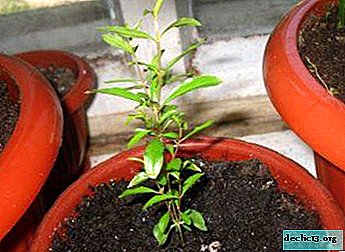 Provide a bright and warm place.
Provide a bright and warm place.- Monitor the condition of the soil, prevent strong drying of the soil.
- Preferably, the sprouts are sprayed with water from a spray bottle.
- For the successful development and rapid growth of the root system of the grant, space is necessary, therefore, choose a landing capacity of a rather large size.
- Mandatory drainage.
- In winter, it will not be superfluous to perform additional illumination. Otherwise, with a lack of lighting, the plants will stretch or completely slow down growth.
What to do if it does not take root?
Mostly pomegranate tree survives without problems after planting. However, in the case of an improperly selected location, improper soil composition, the presence of cold air or drafts, the plant may begin to wither. In this case, you need to try to take into account all the rules and subtleties when growing a fetus. If necessary, change the place or transfer to another soil.
So, to grow a tree and wait for pomegranates is not difficult both at home and in the open ground. It is only important to correctly follow the recommendations for care, and then the plant will be sprawling, strong, with beautiful flowers, due to which it will fit into any design.

 Peel pomegranate seeds, and immediately place in a container with a stimulating solution for 10-12 hours.
Peel pomegranate seeds, and immediately place in a container with a stimulating solution for 10-12 hours. Provide a bright and warm place.
Provide a bright and warm place.
